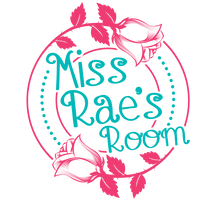|
How do I find the time to teach Science and Social Studies???
How do I find the time to cover all of the curriculum, nevermind actually teach it??? How do I get my students to work cooperatively together??? How do I get my students to work together to learn together??? Well, I have the answer. Get your students to work together to learn together using the jigsaw reading teaching strategy! Plan: Every student will work in an Expert Group to become an “Expert” on a topic or skill. These students will all read the same text together, determine the main idea, and then, use their expert knowledge to teach the students in their Home Groups about the topic or skill. First, make your Expert Groups Expert Groups should consist of 3-5 students who similar reading abilities. Essentially, these should be homogeneous groups. Next, find a set of reading selections on the content you are teaching. For example, if you are studying Plants, perhaps one Expert Group reads about the parts of the plants and their functions, another Expert Group will receive a text about the life cycle of a plant, and the last Expert Group will read a text about adaptations of plants. These should be short texts. Think the length of an article in a magazine! Note: It is important that the reading material assigned is at appropriate instructional levels (90–95% reading accuracy). I use sections from textbooks, chapters from novels, or websites with FREE non-fiction articles like...Newsela (https://newsela.com/) or ReadWorks (https://www.readworks.org/) Next, make your Home Groups. There should be one “Expert” from each Expert Group in each Home Group.
Launch:
Explain to students that they will be working in different cooperative groups to become “Experts” on a topic or skill Introduce the strategy and/or the topic to be studied. Explore: Then, group students into their Expert Groups and provide them with their assigned text to read. Give students an appropriate amount of time to read the assigned text. Provide students with highlighters, sticky notes, and/or a graphic organizer for notetaking. It should be explained to students that while reading their texts in their Expert Groups, they should be reading for main ideas, supporting details, and key terms. It is going to be the Experts’ jobs to teach other students about what they read. After the Experts have finished reading the text, students should work together in their Expert Groups make sure that all members of the group fully understand the ideas presented and are able to accurately summarize their learning. Note: You may provide key questions and/or a graphic organizers to focus the discussion. Next, students move to their Home Groups. While in their Home Groups, each student (or Expert) will report the information learned from their Expert text (or the text they read in their Expert Group). It is important to remind students that Home Group members are responsible to learn ALL content from one another. Using our Plant example, each Home Group should have one student from the Expert Group that read about the parts of the plants and their functions, one student from the Expert Group that read about the life cycle of a plant, and one student from the Expert Group that read about adaptations of plants. Each member of the Home Group is expected to learn about each topic or skill learned by the Expert. You may wish to prepare a summary chart or graphic organizer for each Home Group as a guide for organizing the Experts' information into a report of some sort. Summarize: Facilitate a whole class discussion to summarize the students’ learning. Ask Home Groups to report out about what they learned from each other!
OR try this variation to the Jigsaw Reading Cooperative Learning Strategy:
And there you have it!
You taught your students to work together to learn together! (Oh, and you taught content you didn’t even know you had time to teacher AND you did it all in one lesson!) Happy Teaching! Miss Rae
1 Comment
12/28/2022 06:24:34 am
anks for sharing the article, and more importantly, your personal experience of mindfully using our emotions as data about our inner state and knowing when it’s better to de-escalate by taking a time out are great tools. Appreciate you reading and sharing your story since I can certainly relate and I think others can to
Reply
Leave a Reply. |
CategoriesAll Comprehension CoPlanning CoTeaching Directed Reading DIY Fluency Fountas & Pinnell Graphic Organizers Guided Reading Lesson Planning Multi-Tiered Systems Of Support Phonological Awareness RAN Read And Respond Reading Reading Assessments Reading Comprehension Response To Intervention RTI Science Of Reading Science Of Reading For Special Education Teachers Special Education Special Education Eligibility Special Education Lesson Planning Teaching Strategy Visualizing & Verbalizing Visual Texts Vocabulary Writing Writing In Response To Reading |




 RSS Feed
RSS Feed